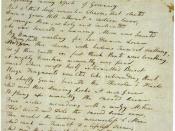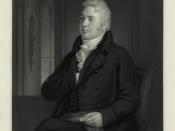Although imaginative journeys can take many forms, they all produce some form of change in those who go along for the ride. Discuss.
Imaginative journeys take us into worlds of inspiration, speculation and imagination, it takes the reader to new worlds and allow the reader to escape from their reality. Imaginative journeys allow responders to expand the limitations of the mind, providing an intricate insight into their lives and their perceptions of their world.
Imaginative journeys are constructs of the mind and therefore can take many forms, including memory, the imagination, dreams, fantasy and hallucinations. However different the forms that these imaginative journeys take, they always achieve one thing. That is, a form of change in the part of the journeyer. This concept is explored in two texts: The Young King by Oscar Wilde and This Lime-Tree Bower, My Prison by Coleridge.
This Lime-Tree Bower, My Prison begins in melancholy as Coleridge ponders being left alone in the lime-tree bower while his friends have gone walking.
In the beginning the mood could be said to be ironic, since the "imprisonment" of the bower actually liberates his imagination to the point where he later "rejoins" his friends, and also to the point where he is able to create the poem itself.
Coleridge takes the poet's self as the starting point for an exploration of the universe and an exploration of his own position in it. Thus, they are centrally about a journey within Coleridge's own consciousness. In this case, This Lime-Tree Bower My Prison is an imaginative and imaginary journey undertaken with his friend, Charles Lamb - one which eventually broadens his own understanding of the world.
This Lime-Tree Bower, My Prison contains a journey in three aspects (all explored through Coleridge's imagination) - on the part of the reader as...


